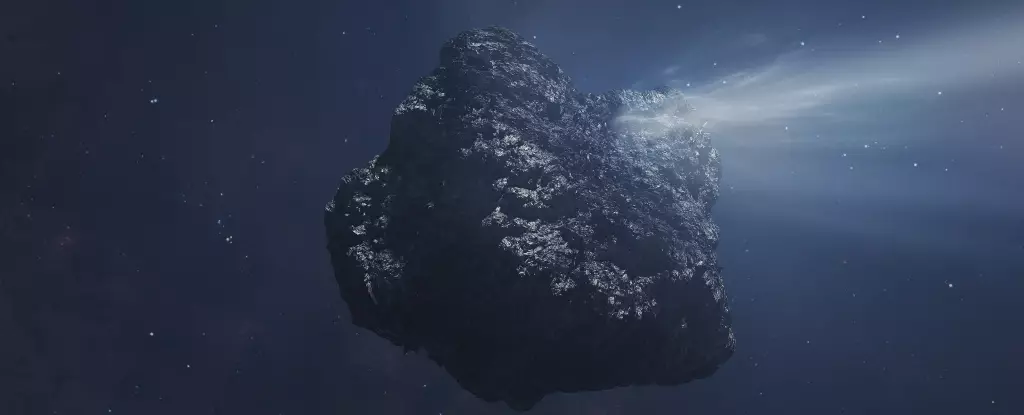A monumental comet is on a path toward the inner Solar System, and it is an object of both fascination and concern. Comet C/2014 UN271, also known as Bernardinelli-Bernstein, is striking not only for its sheer size but also for its dramatic behavior as it travels through space. With a staggering diameter of approximately 137 kilometers (85 miles), this comet dwarfs the famed asteroid that played a significant role in the demise of the dinosaurs. The scale of this celestial body serves as a reminder of the forces at play in our universe—forces that can both create life and threaten it. Yet, even as it draws closer, the cosmic giant will not pose a direct threat to Earth, making its approach a spectator event for astronomers and enthusiasts alike as it peeks into our celestial neighborhood in January 2031.
Observational Breakthroughs from ALMA
The Atacama Large Millimeter/submillimeter Array (ALMA) in Chile has provided groundbreaking insights into this behemoth, highlighting its tumultuous activity. Recently, astronomers captured compelling images of rapid outgassing events from the comet’s nucleus, releasing substantial amounts of carbon monoxide—an essential chemical building block of life. These observations, made during March 2024, allowed researchers to glimpse the volatile nature of the comet, as it exhibited signs of explosive outbursts. Astrochemist Nathan Roth aptly pointed out that this discovery enables scientists to glean information about the dynamics of such large icy bodies and their evolutionary pathways as they traverse through the Solar System.
The first ALMA observation on March 8 indicated vigorous activity, detecting jets of gas erupting from the solid icy core of the comet. However, by March 17, the energetic displays had diminished, with just a single jet visible. This decline illustrates the unpredictable nature of comets and raises pertinent questions about their behavior and life cycles. It showcases a beautiful contradiction—while these celestial bodies evoke fear with their size, they also inspire awe with their complexity.
The Comet’s Historical Significance
In the grand tapestry of astrophysics, Comet C/2014 UN271 holds a unique position. As the largest known Oort Cloud comet to grace our observational capabilities, it eclipses its predecessors, such as Hale-Bopp, which was once the reigning champion. Interestingly, while UN271 is not the largest comet ever discovered (that title goes to 95P/Chiron), its presence within the inner Solar System is monumental. The comparisons draw a fine line between Harrissian wonder at cosmic scale and the very real necessity for scientific understanding.
As scientists continue to monitor its trajectory, the anticipation builds. Though UN271 will not be visible to the naked eye—a disappointment for casual stargazers—its impending journey promises to be a spectacle for those with the appropriate tools. Astronomers are preparing for a wealth of data that can not only illuminate the comet’s characteristics but also broaden our understanding of the history of our Solar System.
The Human Element in Cosmic Exploration
The excitement surrounding discoveries like C/2014 UN271 reminds humanity of its insatiable curiosity and the profound impact of scientific inquiry. Each satellite image, spectrogram, and data set enhances our grasp of the universe’s anomalies and intricacies. The comet’s impending visitation serves as a beacon for scientific engagement, drawing attention from both academia and the general public. In an age where information often feels overwhelming, these cosmic events allow us to reconnect with our natural curiosity about the universe’s vastness.
While some might view the arrival of such a gigantic comet with apprehension, it should incite a celebration of human ingenuity and the relentless pursuit of knowledge. This monumental explorer of the cosmos encourages us to look up from our day-to-day lives, reminding us that, despite the enormity of space and time, we are all connected in our quest to understand the mysteries that surround us. The cosmic dance between Earth and distant comets like UN271 enfolds us in wonder and challenges our perspective on existence itself.

